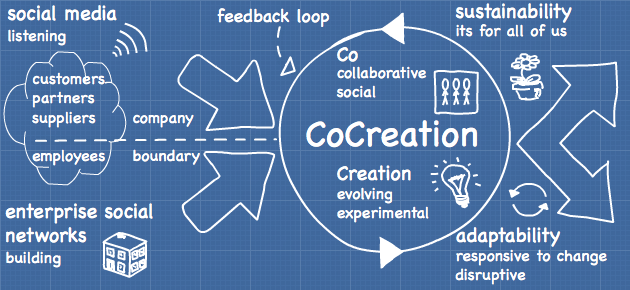
Co-Creation In Marketing
Marketing and advertising are changing as fast as ever, and the customers are now pulling the strings. The Internet means customers have ever-larger abilities to compare, research, and review companies, enabling both the good and the bad to be heard ’round the world. This has proven to be a challenge for some companies, who have become used to exercising control over their brand messaging.
On the other hand, many brands are also harnessing the Internet’s power to deliver “social proof” by improving their use of user-generated content, or UGC. These brands are the ones that understand the power of letting consumers co-create their brand, and see that the process lets them tap into their biggest fans’ creativity.
Reviews
Co-creation means for many companies that they participate in and encourage reviews of their products or services as well as conversations about the brand, either on their own website or on a third-party page.
Reviews, overall, are one of the best kinds of UGC companies should encourage. They’re the closest to the process of buying, and directly affect sales numbers and conversion rates. On the web, it’s been shown that customers who interact with customer Q&A and reviews convert 150% higher than customers who don’t have any interaction with UGC.
To be sure, negative reviews are inevitable — but they are very much the minority. On average, just 10% of reviews are 2/5 stars or less. For companies, leaving a professional, calm response to negative reviews is an excellent way to show they care about customer satisfaction.
More Elaborate Co-creation
Of course, UGC doesn’t need to stop with reviews. Co-creation can be used to design everything from ads to product packaging. In many cases, it can help speed up the process of idea generation, weed out any potential issues, enable quick but strategic decision-making, reduce the risk of failure, and most importantly, more closely align products with the consumers’ demands and needs.
One example is San Francisco’s ModCloth, an apparel company who lets customers vote on clothing pieces. If a piece gets enough votes, then ModCloth orders the item for their store. Customers also get clothing credits for referring their friends, and they can even name new clothing designs.
ModCloth even created a whole user-generated clothing collection: it let users send in sketches, and from the 1900 designs entered in competition seven winners were chosen.
This kind of customer involvement means the company is able to build a community surrounding their inventory, letting them expand the firm’s reach in the fashion blog community, and even forecast a given item’s demand.
Co-creation can be used to help produce ad campaigns, too. For example, Rubbermaid ran a print ad with consumer-written content and saw the consumer co-created ad get 10% greater coupon redemption compared with a similar campaign that had no consumer content. The financial services company USAA similarly makes a point of reading genuine consumer testimonials in radio ads.
Coca-Cola tends to take a fan-first approach to many interactions, such as the friendly way they handled issues with a Facebook page which two Coke fans created, or the Australian “Share a Coke” campaign which encouraged fans to make their own Coke commercials with Facebook album photos, get Coke cans with friends’ names on them, or share ‘virtual Cokes’.
Coke’s new FreeStyle fountain dispenser was designed to enable co-creation. The dispenser provides more than 100 products with any type of flavor mix to allow unique new combinations of flavor. There’s a new mobile app to let consumers save their favorite blends, so any Coke FreeStyle machine will know their favorite combination of flavors. Data feedback from the machine and feedback from users means the machine represents real-time co-creation and gives Coke the potential to develop into completely new markets.
Target also recently ran an ad campaign with real home videos of college students opening acceptance letters. Since it used real people with genuine emotional reactions, it resonated with customers all around the country and helped Target create a more personal relationship with their clients.
Some companies even reward customers who creatively engage with the brand. Zappos last year had a total of $48,000 worth of cash awards for users who created 30-second commercials to celebrate the art of holiday gifting. The apparel and shoe website then broadcast the top consumer-produced TV spot over a wide range of networks to promote Zappos as a key destination for holiday gifts.
Chevron similarly offered $100,000 worth of cash awards to motivate people to produce videos spreading optimism and information about the fight against AIDS.
